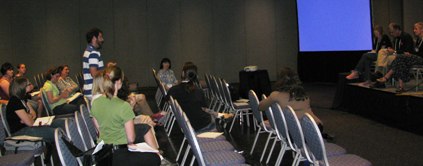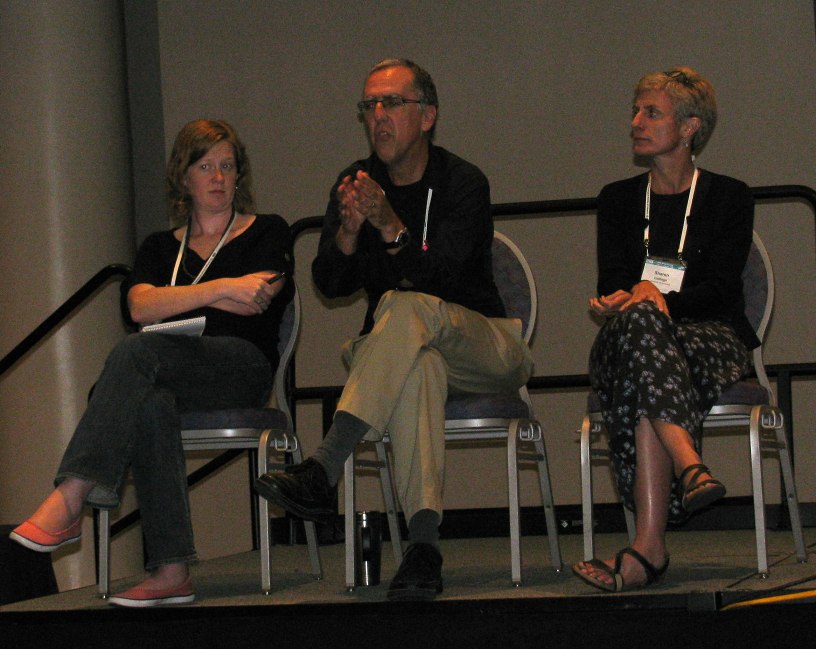Meet the Press: Scientists talk ecology with the media
 Last night the worlds of science and journalism collided at the ESA Annual Meeting in a session to help scientists learn how to communicate with the media. Fittingly called Meet the Press: Talking Ecology with the Media, the interactive session played out like a science American Idol, with scientists pitching their research to a panel of “judges”: two journalists and a media-savvy scientist.
Last night the worlds of science and journalism collided at the ESA Annual Meeting in a session to help scientists learn how to communicate with the media. Fittingly called Meet the Press: Talking Ecology with the Media, the interactive session played out like a science American Idol, with scientists pitching their research to a panel of “judges”: two journalists and a media-savvy scientist.
The three panelists first offered their different perspectives on the science-media interface. Emma Marris is a science journalist for Nature who writes feature and news stories for the weekly science publication. John Fleck is a science journalist at the Albuquerque Journal, a metropolitan newspaper. And Sharon Collinge is a practicing ecologist who has had training and experience working with the media.
Using these tips, the attendees then took turns pitching their work to the panel – in under one minute. The volunteers pitched stories about shark finning, genetically engineered crops, invasive baby’s breath flowers and trees that might deter nitrogen deposition in public water sources – a form of pollution that can lead to blue baby syndrome. The panelists took notes and asked follow-up questions, then gave crtitiques.
Ariana Sutton-Grier of the Smithsonian Environmental Research Center found the session especially useful and interesting, in particular because she learned that many institutions have dedicated staff to help scientists connect with the media. “I never even realized that we have public information officers,” she said, adding that the session helped her realize that the stories behind the science are often just as interesting as the results.
Although the panelists love a good story about science, they admit that, like any reporter, they too are looking for a good “news peg,” or an exciting bit of newsworthy information that can make a good headline. As Marris put it, “If I got an e-mail with the subject line ‘Trees help prevent blue babies,’ I’d open it.”
